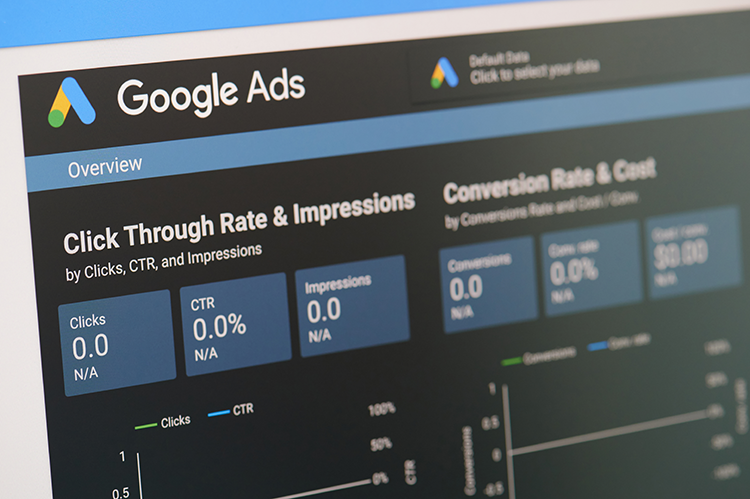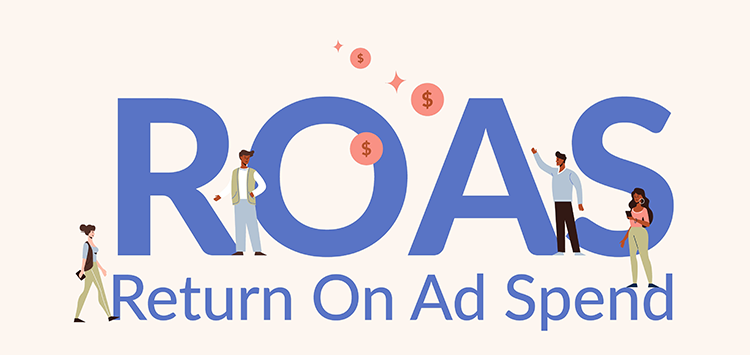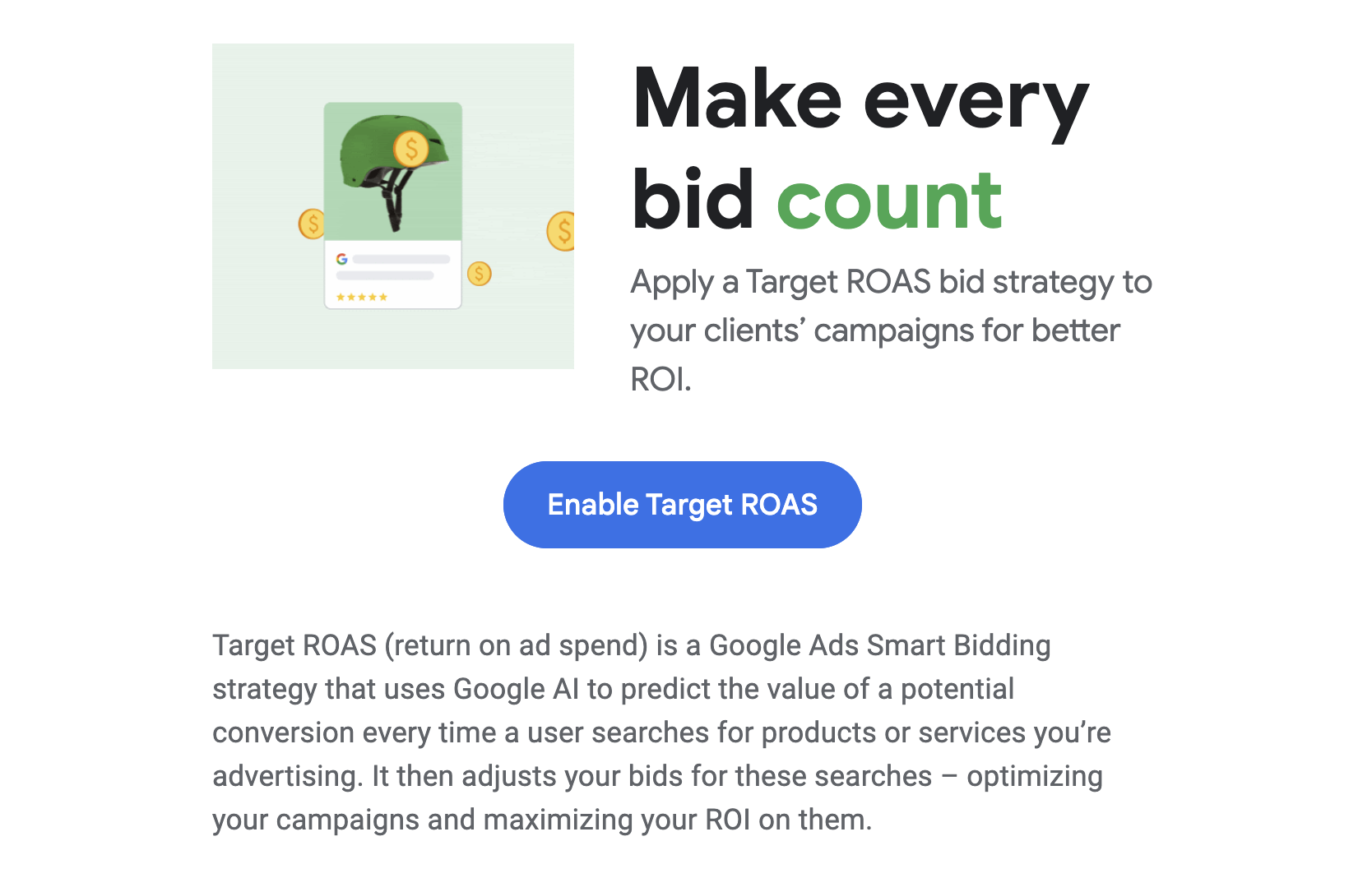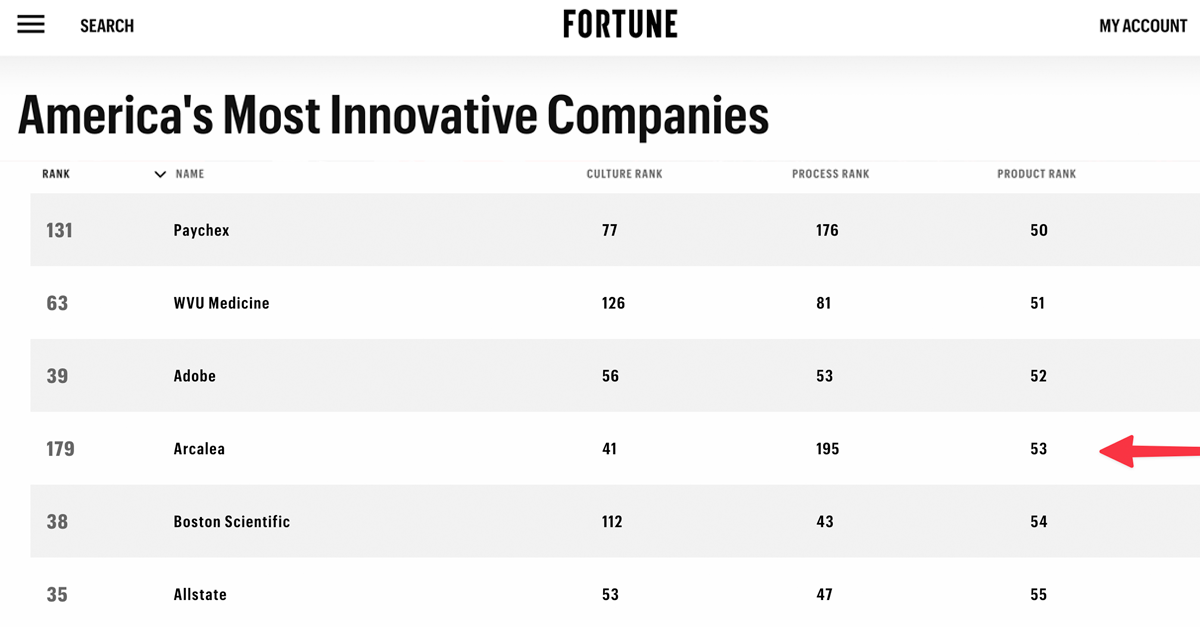“ROAS: What did you just SAY?”
The true measure of an advertising campaign's success boils down to two critical metrics: Return on Ad Spend (ROAS) and Return on Marketing Investment (ROMI). ROAS provides a straightforward ratio of gross revenue generated for every dollar spent on advertising, shedding light on the immediate financial impact of specific campaigns. On the other hand, ROMI takes a wider lens, evaluating the incremental financial gains from marketing activities against the costs incurred, offering a broader perspective on marketing effectiveness.
These metrics are invaluable to marketers, converting complex campaign data into actionable insights. They act as north stars, guiding the optimization of marketing strategies and reinforcing financial accountability. However, this pursuit often leans heavily towards top-funnel metrics such as Click-Through Rate (CTR), Impressions, and Site Traffic. While valuable, these metrics serve more as indicators of potential customer interest rather than direct markers of sales or revenue contributions.
Take, for example, a campaign with a high CTR. This suggests the advertisement effectively prompts users to click through. Yet, without conversions or sales to back it up, a high CTR alone can't confirm campaign success. Similarly, amassing millions of Impressions might indicate widespread reach, but it doesn't necessarily translate to a proportionate increase in revenue. Moreover, a boost in Site Traffic may seem promising, but without analyzing the quality of this traffic and its contribution to sales, these figures offer a limited view of campaign effectiveness. The crucial insight here is clear: While top-funnel KPIs can provide an initial gauge of customer engagement, they often fall short of capturing the full picture of actual conversions and genuine revenue generation.
This gap between initial campaign engagement metrics and real financial outcomes highlights the inherent limitations of Google's "Target ROAS" bidding strategy. Despite Google's reliance on its own algorithms aimed at optimizing ad spend for maximum “conversion” value, its misnomer approach favors top-funnel actions without having ever established a direct connection to revenue. This raises significant questions: “How can Google offer a product using the term “ROAS” when there is clearly no demonstrated return?” (and) “How can marketers ensure that their campaigns do more than just capture vague interest, but also drive substantial revenue?”
Enter Galileo, a beacon in marketing analytics, designed to transcend the limitations of traditional metrics by forging a direct link between marketing efforts and revenue outcomes. This shift not only delivers insights into campaign efficacy but then reports the tangible impact on the bottom line. It sets the stage for a detailed exploration of Galileo's unique ability to bridge the gap left by conventional strategies, including Google's "Target ROAS," which is, ironically, another marketing name for a bidding strategy that--you guessed it--enables you to spend more!

The Disconnect in Google's Approach
Google's "Target ROAS" bidding strategy represents another tuning mechanism to try to approximate a “return” dial by allowing advertisers to specify a target return on ad spend. This approach targets high-funnel metrics like Click-Through Rate (CTR), Impressions, and Site Traffic as proxies for potential campaign success. While these metrics are used for gauging initial ad interest and overall reach, their inherent flaw is the lack of a direct correlation with the cornerstone of marketing success—actual revenue (hence my umbridge with their use of the term).
The strategy's emphasis on preliminary engagement metrics implies that heightened interactions at the campaign's outset should naturally culminate in increased conversions and revenue downstream. However, this assumption overlooks both the nuanced customer journey that spans from an ad click to the eventual purchase decision, AND the lack of Google to actually account for delivering said “return.”
The absence of a robust feedback loop that definitively ties these high-funnel actions to concrete revenue outcomes leaves marketers in a quandary. For instance, a campaign that excels in drawing clicks and boosting traffic, as deemed successful by Google’s strategy, might not see a proportional rise in actual sales. This perceived efficiency might be inflated, as the campaign could be generating lots of interest without a corresponding increase in conversions. The failure to directly attribute these engagements to revenue generation underpins a significant gap in understanding the real effectiveness of marketing campaigns.
Moreover, this approach potentially leads to a misallocation of marketing budgets, focusing resources on strategies that seem effective on the surface but do not substantially contribute to the bottom line. This cycle of inefficiency underscores the critical need for a methodology that not only captures initial interest but also quantifiably drives revenue, addressing the limitations posed by Google's "Target ROAS" strategy.
Real-World Application: The Case of EcoWear
Consider the example of EcoWear, a fictional e-commerce company specializing in sustainable clothing, which embarked on an ambitious digital advertising campaign to promote its new line of eco-friendly running shoes, with a focus on their use of Google's "Target ROAS" bidding strategy for their digital advertising campaign promoting a new line of eco-friendly running shoes.
Campaign Overview:
-
Objective: Increase online sales for the new eco-friendly running shoes.
- Platforms: Google Ads.
- Budget: $50,000 /month.
- Target ROAS: EcoWear sets a target ROAS of 4x, aiming for every dollar spent on ads to result in four dollars of revenue.
Campaign Execution:
EcoWear's marketing team, led by Alex, activates Google's "Target ROAS" bidding strategy for their campaign. This approach utilizes Google's algorithms to automatically adjust bids to achieve the specified return on ad spend. The ads are appealing, highlighting the shoes' sustainability and style, targeted at an audience interested in green products and fitness.
Initial Success:
Mid-campaign analytics show promising signs:
- Ad Spend: $25,000 (halfway through the campaign).
- Estimated Revenue (based on Google’s predictions): $120,000.
- Apparent ROAS (based on predictions): 4.8x, surpassing the target.
The team is initially pleased, as Google's algorithms seem to be optimizing the campaign effectively towards the target ROAS, suggesting a successful strategy.
Reality Check:
At the campaign's end, the actual sales data tells a different story:
- Total Ad Spend: $50,000.
- Actual Revenue: $60,000.
- Actual ROAS: 1.2x, significantly below the target and initial estimates.
Discrepancy Analysis:
Upon a closer examination, Alex identifies key factors leading to the optimistic early predictions not aligning with the final sales figures:
- Over Reliance on Early Engagement: Google's AI optimized for conversions such as adding items to carts or initiating checkout processes, interpreting these as signals towards future sales. However, many of these conversions did not translate into completed purchases.
- Bidding Strategy Misalignment: While Google's "Target ROAS" bidding focused on maximizing top-funnel actions believed to contribute to the desired ROAS, it was not related to actual purchase conversions.
- Multi-touch Factors: And, perhaps most importantly, the end-to-end customer journey, including final purchase decision, revenue, and how additional touchpoints, and sequence of those touchpoints, factor into final buying decision is missing in the “Target ROAS” bidding.
To summarize, there is no “ROAS” calculation in the bidding process - only a proxy for a return is used, which is only a top of funnel action which may indicate a down funnel conversion. But what if it's not?
Strategic Shifts:
This experience prompts Alex and the EcoWear team to reconsider their reliance on "Target ROAS" bidding without deeper analysis of the entire sales funnel and post-purchase behavior. Moving forward, they plan to:
- Implement tracking and analytics through to revenue to better understand where the drop-offs occur in the customer journey and address these specific issues.
- Reallocate toward ads that demonstrate association with revenue, either as a single touch, or part of a multi-touch conversion journey.
- Explore a more holistic approach which examines cohort analysis of various combinations of touchpoints, rather than just a top of funnel interest. Using ML and analyzing the entire funnel across hundreds of conversions, new patterns will become clear which lead to optimization of conversions and revenue.
Galileo’s Foundational Innovation
Galileo's philosophy is simple yet revolutionary: position the end goal of marketing—actual revenue generation—at the forefront of every strategy. This approach shifts focus away from the superficial allure of high-funnel metrics, such as “Target ROAS”, “CTR”, and “Impressions”, which Google emphasizes. By leveraging first-party, cookie-less data, Galileo achieves a granular tracking of the customer journey from first engagement to the final sale. This comprehensive view offers insights beyond what traditional metrics can capture, enabling a deeper understanding of campaign efficacy.

A Revenue-Centric Methodology
Galileo’s analytics engine meticulously captures and calculates each customer interaction with specific revenue results. This level of detail provides actionable insights, allowing marketers to identify which strategies genuinely drive financial success and deserve further investment. With this intelligence, marketers can confidently reallocate their budgets towards the most lucrative channels and strategies, optimizing ROI and facilitating sustained business growth.
Optimizing Future Revenues with Dynamic Predictive Modeling in Galileo
Incorporating Galileo into marketing strategies offers an unprecedented level of precision and foresight in predicting and enhancing future revenues. By leveraging historical data on Return on Ad Spend (ROAS) and Customer Acquisition Cost (CAC), Galileo enables brands to forecast future revenues with remarkable accuracy and dynamically optimize future marketing expenditures. This transformative approach allows for proactive marketing strategies, facilitating nuanced "What If" analyses. Such analyses reveal the potential outcomes of reallocating marketing budgets, presenting a clear pathway to maximizing future revenues based on data-driven insights. The ability to reshape future revenue projections through strategic budget reallocation represents not just an enhancement of traditional analytics but a redefinition of how marketing intelligence can drive financial performance, ensuring that every marketing dollar is invested with precision.
Core Advantages of Galileo Over Google's Approach
As we venture deeper into the digital age, the quest for a marketing strategy that yields measurable financial success becomes paramount. Galileo's innovative platform rises to this challenge, offering distinct advantages over Google's "Target ROAS" approach. These advantages not only address the shortcomings of relying on high-funnel metrics but also underscore Galileo's commitment to tying marketing efforts directly to revenue outcomes. Here, we outline the key benefits that set Galileo apart in the competitive landscape of digital marketing:
- Precision in Data Collection and Analysis:
- Galileo's Edge: Leveraging first-party, cookie-less data, Galileo provides a more granular and comprehensive view of the customer journey compared to Google's third-party data reliance. This allows for a more accurate and detailed understanding of campaign effectiveness, capturing every touchpoint from initial engagement to final conversion.
- Impact: Marketers gain insights that are actionable and closely tied to revenue, allowing for strategies that are data-informed and directly aligned with revenue objectives.
- Direct Link to Revenue Generation:
- Galileo's Approach: Galileo excels in attributing marketing activities directly to sales, offering transparent insights into ROI. This contrasts with Google's strategy, which often stops short of establishing a clear connection between marketing efforts and actual revenue.
- Benefit: This direct attribution enables marketers to optimize their campaigns based on what truly drives financial success, ensuring that investments are channeled into the most profitable activities.
- Advanced, Customizable Attribution Modeling:
- Innovation by Galileo: Unlike the one-size-fits-all methodology of Google's bidding algorithms, Galileo provides customizable, machine learning-driven attribution models that account for the unique goals and nuances of each business.
- Advantage: Marketers can accurately assess the ROI of diverse marketing channels and tactics, empowering them to make informed decisions on budget allocation and strategy optimization.
- Forward-Looking Analytics:
- Galileo's Pioneering Features: Galileo goes beyond retrospective analysis by incorporating predictive and prescriptive analytics. This not only forecasts future market trends and consumer behaviors but also suggests actionable strategies to capitalize on these insights.
- Value: Businesses are equipped to stay ahead of the curve, making proactive adjustments to their marketing strategies to seize emerging opportunities.
- Holistic Customer Journey Insights:
- Galileo’s Comprehensive Analysis: Providing an in-depth view of the entire customer journey, Galileo allows marketers to understand how different channels and touchpoints contribute to sales and customer acquisition.
- Outcome: This comprehensive insight enables a strategic reallocation of marketing spend towards efforts that have a significant impact on the bottom line, enhancing the efficiency and effectiveness of marketing investments.
Navigating the digital marketing landscape demands more than just engagement; it requires a strategic alignment that directly translates marketing efforts into tangible revenue. Through the exploration of Galileo's innovative approach compared to Google's "Target ROAS" strategy, it's evident that achieving a high return on marketing investment necessitates a shift towards data-driven, revenue-focused analytics. Galileo stands at the forefront of this shift, offering a suite of tools that not only addresses the limitations of traditional digital marketing metrics but also propels businesses towards financial success.
Key Takeaways:
- Precision and Clarity: Galileo transcends traditional analytics by delivering precise data collection and comprehensive insights that link marketing activities directly to revenue, providing marketers with the clarity needed to optimize their strategies effectively.
- Strategic Optimization: By leveraging advanced, customizable attribution models and predictive analytics, Galileo enables businesses to strategically allocate resources, maximizing ROI and ensuring sustainable growth.
- Holistic Understanding: Galileo’s capability to provide an in-depth view of the customer journey allows marketers to understand the true impact of their efforts, enabling strategic decisions that drive genuine business value.
In an era where data reigns supreme, Galileo emerges as the pivotal tool for marketers seeking to navigate the complexities of digital marketing with confidence and precision. It challenges the status quo, advocating for a marketing paradigm that values revenue generation as the ultimate metric of success. As we look towards the future of digital marketing, it's clear that platforms like Galileo will lead the charge, transforming data into strategic insight and engagements into economic gain.
Moving Forward with Galileo
The journey through digital marketing's evolving terrain is complex, but with Galileo, marketers are equipped with the insights and tools necessary to forge a path to measurable success. Whether you're seeking to refine your current strategies or revolutionize your approach to digital marketing, Galileo offers the analytics, insights, and support to turn goals into achievements.
As we conclude this exploration of Galileo's transformative impact on digital marketing, let it be an invitation to marketers everywhere to reconsider their metrics of success. For those ready to elevate their marketing strategies, to convert data into actionable insight, and to truly align marketing efforts with revenue outcomes, Galileo stands ready to illuminate the way. The future of marketing is not just about reaching audiences but engaging them in ways that drive real, measurable business success. Embrace Galileo, and let your marketing strategies be guided by precision, insight, and the relentless pursuit of revenue growth.
Need Transparent Full-Path Attribution?
Arcalea's Galileo activates marketing data across any marketing mix, with individual and aggregate views. Get transparent intel on conversion sources, optimize buyer paths, and rebalance spends.







